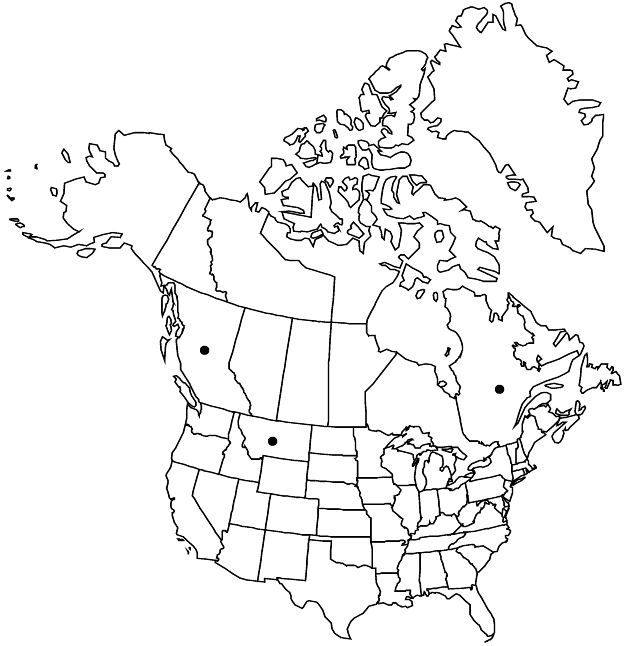Alchemilla subcrenata
Scrinia Fl. Select. 12: 285. 1893.
Plants medium-sized, sometimes larger, yellowish green to dark green, often reddish-brown especially on stems, petioles, and inflorescence branches, to 50 cm. Stems densely spreading to slightly reflexed-pubescent or only sparsely so in distal 1/2. Leaves: stipules translucent, sometimes wine red-tinged proximally, lobes green; petiole sparsely to densely spreading to reflexed-hairy; blade reniform to orbiculate, 7–9-lobed, margins strongly plicate to undulate, basal sinuses closed, basal lobes overlapping (in plants from spring-flooded habitats, only cauline leaves with wide sinus may persist), middle lobes usually longer than their half-widths, as long as wide, longer than wide (with ± straight sides); incisions absent; teeth: proximal sides connivent or slightly so, sometimes slightly concave near apex, slightly to strongly asymmetric, apex subobtuse to obtuse, abaxial surface grass green to dark green, nerves hairy throughout, internerve regions irregularly or uniformly hairy, adaxial densely spreading-hairy throughout or only on margins and folds. Inflorescences: primary branches sparsely to densely hairy; peduncles glabrous or sparsely hairy. Pedicels glabrous. Flowers green, often becoming reddish-brown; epicalyx bractlet lengths 0.5 times sepals (narrower); hypanthium glabrous. Achenes exserted to 1/3 from discs.
Phenology: Flowering Jun–Sep.
Habitat: Moist grasslands, flood plains
Elevation: 0–1400 m
Distribution

Introduced; B.C., Que., Mont., Europe
Discussion
Selected References
None.
Lower Taxa
"timessepals" is not declared as a valid unit of measurement for this property."dm" is not declared as a valid unit of measurement for this property.